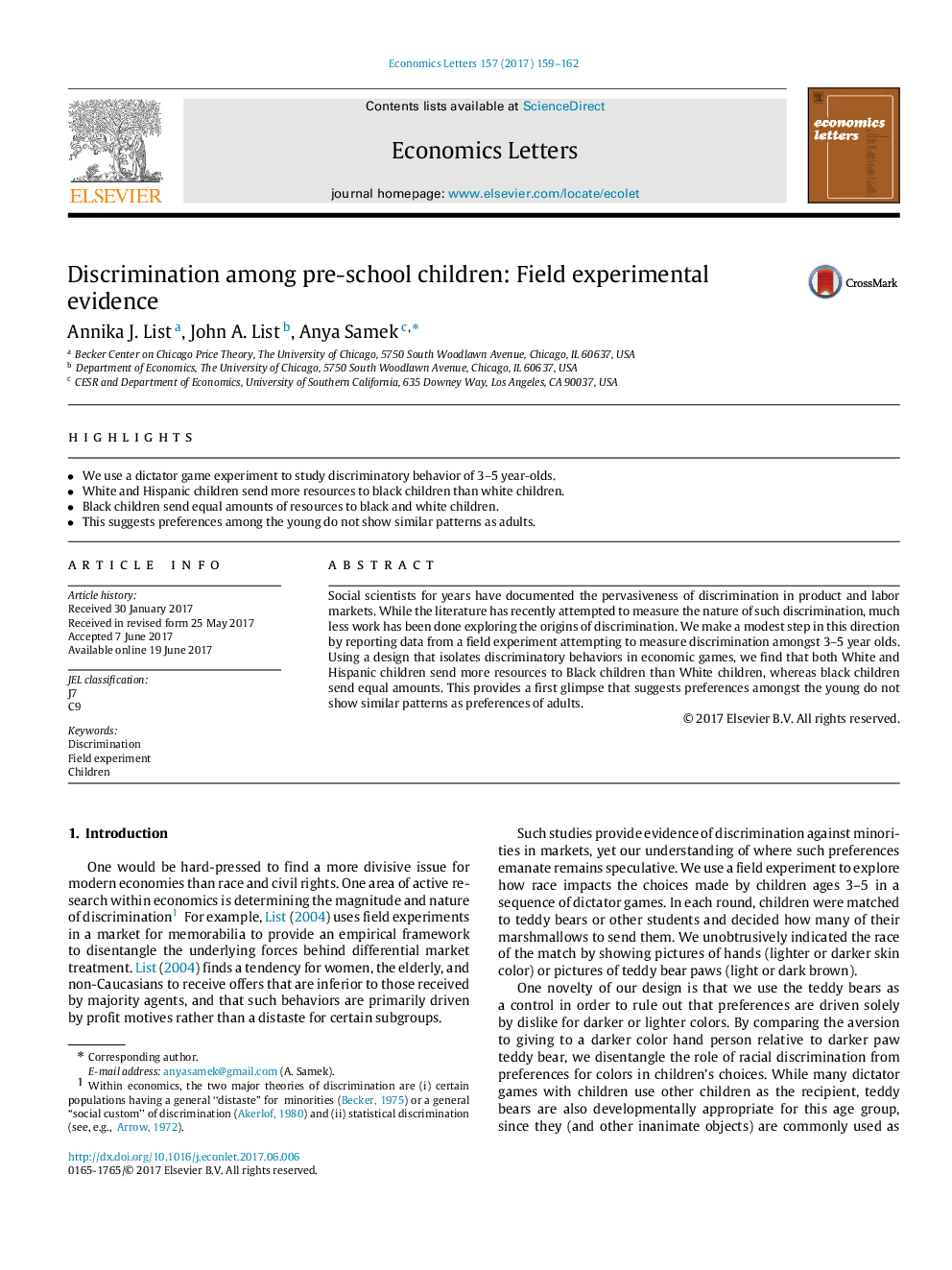| Article ID | Journal | Published Year | Pages | File Type |
|---|---|---|---|---|
| 5057771 | Economics Letters | 2017 | 4 Pages |
â¢We use a dictator game experiment to study discriminatory behavior of 3-5 year-olds.â¢White and Hispanic children send more resources to black children than white children.â¢Black children send equal amounts of resources to black and white children.â¢This suggests preferences among the young do not show similar patterns as adults.
Social scientists for years have documented the pervasiveness of discrimination in product and labor markets. While the literature has recently attempted to measure the nature of such discrimination, much less work has been done exploring the origins of discrimination. We make a modest step in this direction by reporting data from a field experiment attempting to measure discrimination amongst 3-5 year olds. Using a design that isolates discriminatory behaviors in economic games, we find that both White and Hispanic children send more resources to Black children than White children, whereas black children send equal amounts. This provides a first glimpse that suggests preferences amongst the young do not show similar patterns as preferences of adults.
